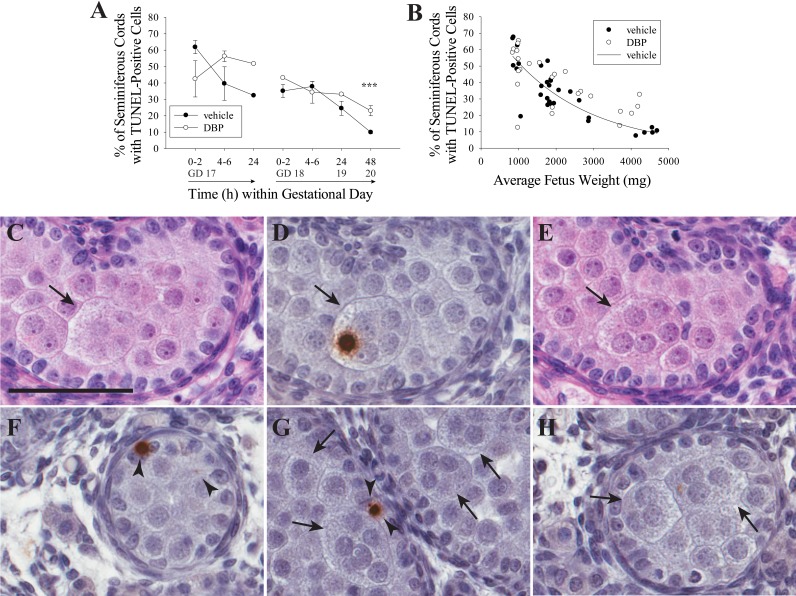FIG. 3.
DBP has no effect on apoptosis at most time points, but it is the probable mechanism of MNG loss. DBP treatment did not increase the frequency of TUNEL-positive cells significantly in the rat fetal testis when treatment began on GD 17 but significantly increased apoptosis rate in GD 18 rats after 48 h (***P < 0.001) (A). GD 18 data but not GD 17 had unequal variance. To correct for this, GD 18 data were log10 transformed, and then data were analyzed by two-way ANOVA followed by the Holm-Sidak test. Only the interaction term was significant for GD 17 rats (P = 0.038). Values in A are mean ± SEM. When all samples were analyzed by fetus weight (B), the frequency of seminiferous cords with TUNEL-positive cells in vehicle-treated fetal rat testis decreased according to a two-parameter exponential fit (n = 30, R2 = 0.7177, P < 0.0001). The combined GD 17 and 18 data for DBP-exposed rats was not normally distributed and could not be corrected using a transformation. Therefore, it was not subjected to regression analysis, but the overall trend was downward with increasing fetal weight. C–E) Three serial 5-μm sections from a rat treated with DBP for 48 h beginning on GD 18, stained with H&E (C, E) or TUNEL with hematoxylin counterstain (D). An MNG is visible in all three sections (C–E) with a single TUNEL-labeled nucleus in D. F) Representative TUNEL-positive cells in a sample treated with vehicle for 48 h starting on GD 18, demonstrating the range of signal size and strength in the study. In G, several TUNEL-negative MNGs are shown in a sample treated for 48 h with DBP beginning on GD 18. H shows an MNG with a weak TUNEL signal. In all panels, arrows indicate MNGs, and arrowheads indicate TUNEL-positive cells. Bar = 60μm.

